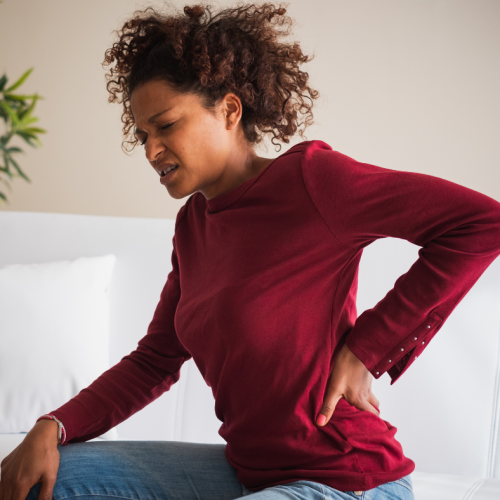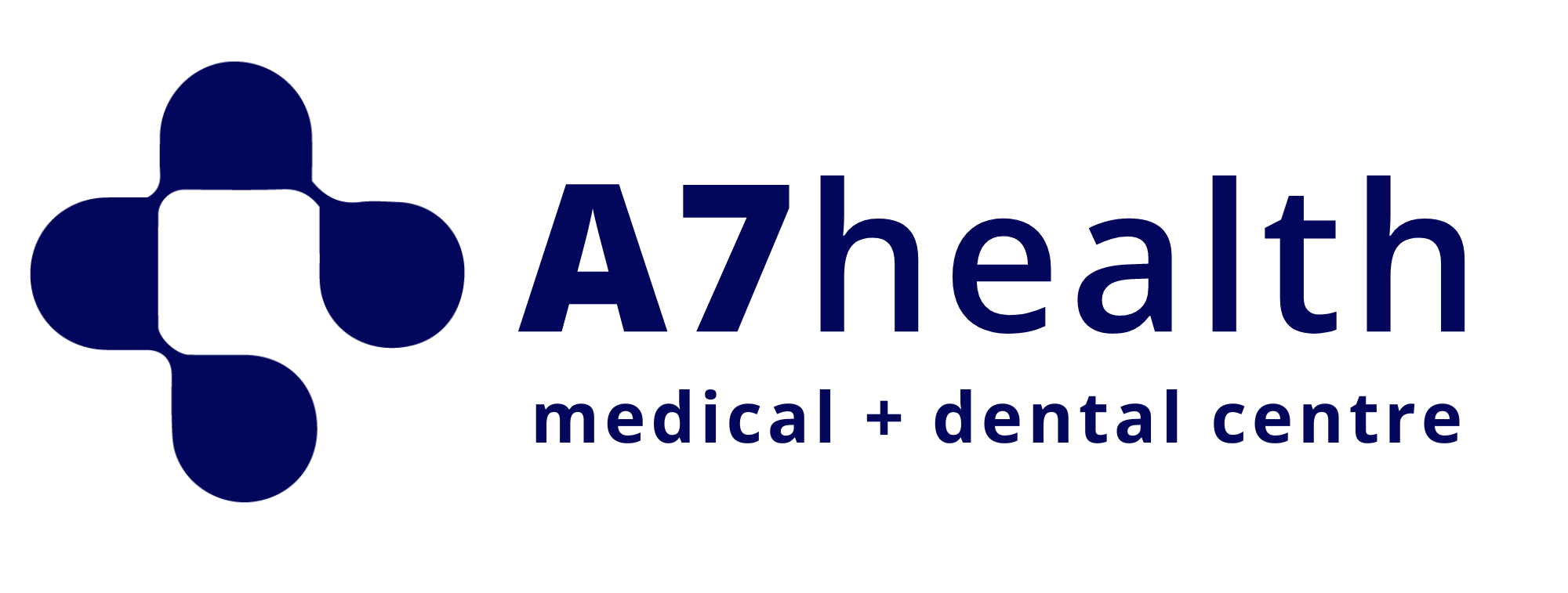Sciatica
Sciatica refers to pain that runs along the sciatic nerve. The sciatic nerve runs from the lower back, through the hips and buttocks, and down into each leg.
If you have pelvic pain during pregnancy or after delivery, schedule an appointment with an A7 Health Physiotherapist for treatment or join the exercise classes at A7 Health with a Biokineticist.
Symptoms of sciatica
Sciatic pain can occur almost anywhere along the nerve pathway. It is especially likely to run from the lower back to the buttocks and the back of the thigh and calf.

The pain can range from a mild ache to a sharp, burning pain. Sometimes it feels like a jolt or electric shock. It may get worse if you cough or sneeze or sit for long periods of time. Usually, sciatica affects only one side of the body.
Some people also have numbness, tingling, or muscle weakness in the leg or foot. One part of the leg may hurt, while another part may feel numb.
Causes of sciatica
Sciatica occurs when the sciatic nerve is pinched. The cause is usually a herniated disk in the spine or a bone growth, sometimes called a bone spur, that forms on the bones of the spine. Less commonly, a tumor can put pressure on the nerve. Or a disease such as diabetes can damage the nerve.
Pregnancy also causes a form of spinal compression that can affect the sciatic nerve. When you are pregnant, your body releases a hormone called relaxin. It is supposed to relax your ligaments and prepare your pelvis for birth. However, loose ligaments and a growing uterus can shift your body’s center of gravity and pinch the sciatic nerve, causing shooting pains in your legs. Sciatica symptoms can increase during pregnancy. In fact, lower back pain and sciatica are quite common. Sciatica is common in the third trimester of pregnancy – but it can occur at any stage of pregnancy. As your baby grows, the extra weight puts pressure on unstable joints and muscles. Sometimes the baby’s position can be the cause of sciatic nerve compression.
Treatment of sciatica
- Keep moving – Rest is important, and it’s tempting to curl up when your body hurts. However, gentle exercise is often more helpful in the long run. Sometimes just a walk can help. Even a pregnancy exercise class is a good way to relax your muscles and your mind. However, try not to bend or twist too much. Low-impact activities like swimming can also be helpful.
- Pay attention to the pain – Listen to your body and watch out for any activities that irritate your sciatic nerve. Avoid heavy lifting and take frequent breaks if your job requires you to stand for long periods of time.
- Get a massage – There’s some evidence that prenatal massage can reduce stress, improve blood circulation, and even regulate hormones.
- See a physiotherapist– Find a professional who can evaluate your condition and provide you with stretches and strength-building exercises to alleviate sciatic nerve pain.
- Sleep on your side – When you lie down, rest on the side of your body that doesn’t hurt. This takes the pressure off the compressed nerve. Use a full body pillow to support your hips and legs.
- After pregnancy – Maintain these habits if your sciatica persists. For some women, sciatic nerve pain disappears completely after childbirth, while others may develop postpartum sciatica symptoms due to weakened back and abdominal muscles. Continue to strengthen your muscles through gentle physical activities and give your body time to recover. If your pain persists or increases during or after pregnancy, see your doctor.
Treatment at A7 Health Sciatica during or after Pregnancy:
Get Physiotherapy – Book an appointment with a Physiotherapist at A7 Health who will assess you in a 45 minute consultation and provide you with treatment alongside a treatment plan to reduce your pain. Some of the treatments include:
- Lower back mobility exercises.
- Massage.
- Mobilisations on any stiff joints such as your hips, lumbar spine joints or the sacroiliac joint (SIJ).
- Pelvic floor strengthening exercises.
- Strengthening exercises for your abdominal muscles.
- Practice relaxation techniques.
- Relieve back pain.
- Relieve pain during sexual intercourse.
Join an exercise class (with a Biokineticist) – Moderate exercise, such as walking, has been shown to help relieve back and pelvic pain during pregnancy. Stretching can help relieve sore muscles. Join an exercise class led by an A7 Health Biokineticist who will teach you exercises that will strengthen and relax muscles and help you to reduce the likelihood of pain after pregnancy. These exercises will also help you with recovery after you give birth.
